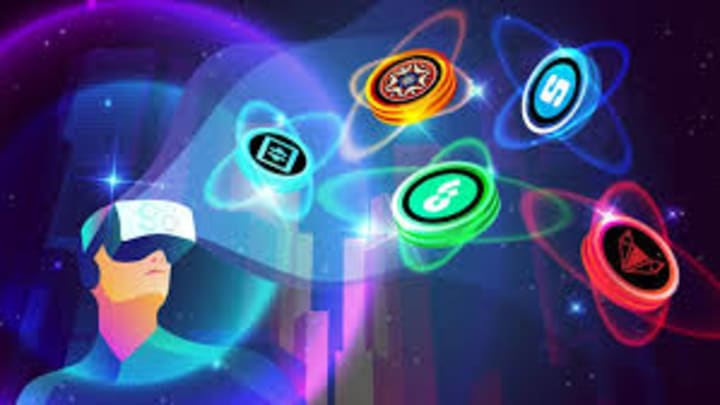Blockchain Technology Revolutionizing Industries and Shaping the Future
A blockchain system is one in which data is currently used to qualify anonymous applicants. These ads are also used, and tests are already known.

Blockchain technology has emerged as one of the most revolutionary and transformative innovations of the 21st century. Originally developed as the underlying technology behind cryptocurrencies like Bitcoin, blockchain has evolved into a robust and secure decentralized ledger system that holds the potential to disrupt numerous industries and drive societal progress. This article explores the fundamental concepts of blockchain, its benefits, use cases, challenges, and its potential to shape the future across various sectors.

1. What is Blockchain Technology?
Blockchain is a distributed, decentralized, and immutable ledger system that enables secure and transparent peer-to-peer transactions without the need for intermediaries. The technology is based on a network of nodes, each maintaining a copy of the entire transaction history, ensuring that any changes or additions to the ledger require consensus among participants. The blocks in the chain contain multiple transactions, cryptographically linked together, making it virtually impossible to alter past data.
2. Key Components of Blockchain
a. Nodes: Participants in the blockchain network who maintain a copy of the ledger and validate transactions through consensus mechanisms like Proof-of-Work (PoW) or Proof-of-Stake (PoS).
b. Blocks: Containers for multiple transactions that are cryptographically linked to the preceding block, forming the chain.
c. Consensus Mechanism: The protocol that ensures agreement on the validity of transactions and prevents double-spending.
3. Advantages of Blockchain Technology

a. Security: Blockchain's decentralized nature and cryptographic techniques make it highly secure, reducing the risk of data manipulation and hacking.
b. Transparency: All participants can view and verify transactions, promoting trust and eliminating the need for intermediaries.
c. Immutability: Once a transaction is recorded on the blockchain, it cannot be altered or deleted, ensuring a reliable and tamper-resistant ledger.
d. Efficiency: Blockchain streamlines processes by automating transactions and reducing the need for paperwork, leading to cost savings and faster operations.

4. Blockchain Use Cases
a. Financial Services: Blockchain enables faster, cheaper, and more secure cross-border payments and remittances, as well as facilitates smart contracts for automated financial agreements.
b. Supply Chain Management: Blockchain enhances transparency and traceability in supply chains, reducing fraud, counterfeiting, and ensuring the authenticity of products.
c. Healthcare: Blockchain secures electronic health records, simplifies data sharing between healthcare providers, and enables better patient consent management.
d. Identity Verification: Blockchain can provide decentralized and secure identity verification, reducing the risk of identity theft and simplifying onboarding processes.
e. Voting Systems: Blockchain-based voting platforms offer transparent and tamper-proof voting processes, increasing electoral integrity.
f. Intellectual Property: Blockchain can protect intellectual property rights by providing a secure and time-stamped record of creations.

5. Challenges and Limitations
a. Scalability: Blockchain networks face challenges in handling a large number of transactions simultaneously, leading to slower transaction times.
b. Energy Consumption: Proof-of-Work consensus mechanisms can be energy-intensive, raising concerns about the environmental impact of blockchain networks.
c. Regulatory and Legal Challenges: Unclear regulations and legal frameworks in various jurisdictions can hinder blockchain adoption.

6. The Future of Blockchain
As blockchain technology matures, we can expect greater adoption across industries and an increase in collaboration between private and public sectors. The integration of blockchain with emerging technologies like the Internet of Things (IoT) and Artificial Intelligence (AI) will unlock new opportunities for innovation. Furthermore, the development of more energy-efficient consensus mechanisms and advancements in scalability solutions will address the current limitations of the technology.
Conclusion
Blockchain technology has the potential to revolutionize various industries and redefine how we conduct transactions, share data, and establish trust. Its inherent security, transparency, and immutability will continue to drive its adoption in
Introduction:
Blockchain technology has emerged as a groundbreaking innovation with the potential to revolutionize industries and reshape the future of various sectors. Originally introduced as the underlying technology behind Bitcoin, blockchain has now evolved into a versatile tool with applications far beyond cryptocurrencies. This article explores how blockchain technology works, its key features, and its transformative impact on industries such as finance, supply chain, healthcare, and more. By providing a decentralized, transparent, and secure framework for transactions and data management, blockchain is poised to drive efficiency, trust, and innovation across a wide range of sectors.

1. Understanding Blockchain Technology:
Blockchain is a distributed ledger technology that allows multiple parties to maintain a shared, tamper-proof database without the need for a central authority. It consists of a chain of blocks, where each block contains a set of transactions. These blocks are linked together using cryptographic hashes, forming an immutable record of all transactions. The decentralized nature of blockchain ensures that no single entity has control over the entire network, enhancing security and transparency.
2. Key Features of Blockchain:
a. Decentralization: Unlike traditional systems, blockchain operates on a peer-to-peer network, where each participant has a copy of the entire blockchain. This decentralization eliminates the need for intermediaries, reduces costs, and enhances system resilience.
b. Transparency: All transactions recorded on the blockchain are visible to all participants, promoting trust and accountability. This transparency helps prevent fraud and provides a verifiable record of ownership or transactions.
c. Security: Blockchain employs advanced cryptographic algorithms to secure data and transactions. Once a block is added to the chain, it becomes virtually impossible to alter or tamper with previous records, ensuring the integrity of the system.
d. Smart Contracts: Blockchain platforms often support programmable contracts called smart contracts. These self-executing contracts automatically execute predefined actions when specific conditions are met. Smart contracts eliminate the need for intermediaries and enable trustless interactions between parties.
3. Revolutionizing Industries:
a. Finance: Blockchain has the potential to transform the financial industry by streamlining cross-border payments, reducing settlement times, and increasing transparency. It enables the development of decentralized finance (DeFi) platforms, offering services like lending, borrowing, and trading without intermediaries.
b. Supply Chain: Blockchain improves supply chain management by providing end-to-end visibility and traceability. It enables real-time tracking of goods, verification of product authenticity, and secure sharing of data among stakeholders. This enhances efficiency, reduces fraud, and ensures ethical sourcing.
c. Healthcare: Blockchain can enhance healthcare by securely storing and sharing patient records, improving interoperability, and enabling efficient management of clinical trials. It also facilitates the secure transfer of medical data between providers, ensuring privacy and data integrity.
d. Government: Blockchain offers governments the potential to increase transparency, reduce corruption, and streamline administrative processes. It can be used for secure voting systems, digital identity management, and efficient public service delivery.
4. Challenges and Future Outlook:
While blockchain holds tremendous potential, it faces challenges such as scalability, energy consumption, and regulatory frameworks. Scalability issues need to be addressed to handle large-scale transaction volumes, and energy-efficient consensus mechanisms are being explored. Additionally, governments need to develop suitable regulations to balance innovation and consumer protection.
Looking ahead, blockchain technology is expected to continue evolving and finding applications in various industries. As advancements in scalability, privacy, and interoperability are made, blockchain will likely become more accessible and widely adopted. The decentralized and trust-enhancing nature of blockchain has the potential to reshape industries, drive innovation, and empower individuals in the digital economy.

Conclusion:
Blockchain technology is revolutionizing industries by providing decentralized, transparent, and secure solutions for various sectors. Its key features of decentralization, transparency, security, and smart contracts make it a powerful tool for transforming finance, supply chain, healthcare, and government operations





Comments
There are no comments for this story
Be the first to respond and start the conversation.